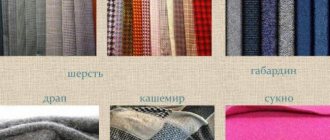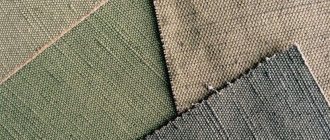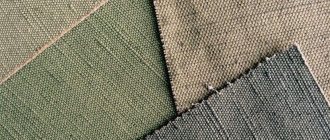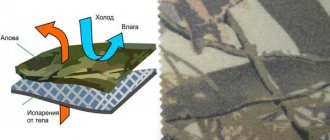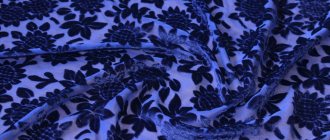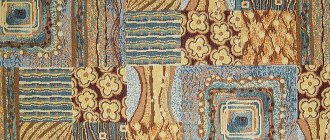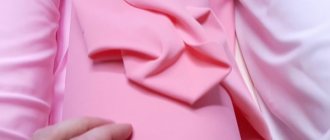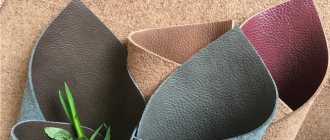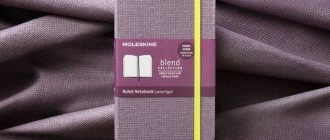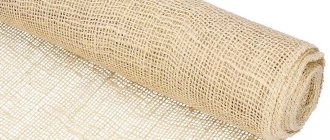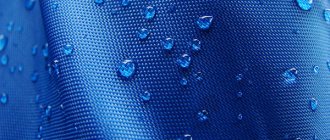Home / Natural fabrics
Back
Published: 01/28/2021
Reading time: 3 min
0
135
Non-woven material, which is widely used in everyday life, industry, and the economic sphere, is called canvas-stitched fabric (HPP). This is a material made from fibers and threads that is created without the use of weaving methods. Cotton served as the basis for the highest quality CPP. Other types of fabric are made from fibers of natural and synthetic materials, textile waste, and recycled materials. This loose fabric quickly absorbs moisture, retains heat, dries quickly, but has a short service life. Recommendations for its care depend on the area of application.
- 1 Description
- 2 Composition and classification
- 3 Material properties
- 4 Application
- 5 Care
HPP fabric: what is the raw material?
The raw material for chemical production is waste from production of cotton, textiles and yarn. Some manufacturers of CPP add synthetic fiber made from plastic to its composition.
In such cases, the plastic is torn into small fibers by special equipment and added to the main raw material. CPP with the addition of synthetics has a lower cost than CPP made from pure cotton.
According to fabric standards, its composition should not contain more than 15% synthetics, otherwise its main function can be disrupted - the ability to absorb moisture well.
Description
CPP is a fluffy mass, the fibers of which are fastened with sutures at small intervals. This loose, voluminous fabric is created from a mixture of natural and synthetic threads. Textile waste or recycled materials can also be used for its production.
Due to its porous structure, non-woven canvas fabric perfectly absorbs water, dirt, grease, paint, etc. For this reason, it is used as a cleaning material.
HPP canvas is created using the following technology:
- Raw materials are selected and prepared. Plastic or metal parts are removed from textile waste.
- Using plucking equipment, the fibers are crushed into a homogeneous mass, which is then rolled out.
- The material is reinforced with threads or polymer.
After this, the canvases are rolled into rolls.
HPP light (stitch 5 mm) Width 75 cm. Density 160 g
PRICE: 11.70 rub.
per linear meter. Add to cart The quality indicators of nonwoven material are affected by the composition of the raw materials and the length of the fiber. CPP, made from 100% cotton, is of high quality. At the same time, the use of long fibers increases the density of the fabric.
HPP fabric: production
The production process of non-woven fabric consists of several stages:
- the raw material is loosened into thin fibers;
- the fibers are superimposed on each other evenly in several layers;
- the fabric is stitched with threads.
It is the production method that determines the main characteristics of the fabric: density and frequency of stitching.
Technical parameters of the canvas
Based on the frequency of stitching, CPP fabric is divided into two types:
- Canvas with a pitch between lines of 5 mm. It is characterized by low density, friability and a short service life. That is, it is not intended for reusable use (for example, washing floors). It will be convenient for them to wipe the oily surface of the equipment once and throw it away. Moreover, it belongs to the cheapest options.
- The distance between lines is 2.5 mm. Dense stitching provides high density to the material and increases its service life. The service life of such a cloth is long, so it is used as a reusable cleaning material. But the cost of frequently stitched fabric is higher than in the first option.
Also, CPP fabrics may differ in density. The maximum fiber density according to GOST is 160 – 220 g/m2. It depends on the fiber layer and stitching frequency. For frequently stitched fabrics, the thickness of the fiber layer is less than for fabrics with a stitching frequency of 5 mm. This tailoring feature is related to the design of the equipment. The higher the density, the longer the service life of the material.
Material properties
Canvas-stitched fabric has the following properties:
Author:
Anastasia Kukushkina
I hope you enjoy the article I have prepared for you! If you find errors in it, write to me about it! I will answer any questions you have, ask them!
